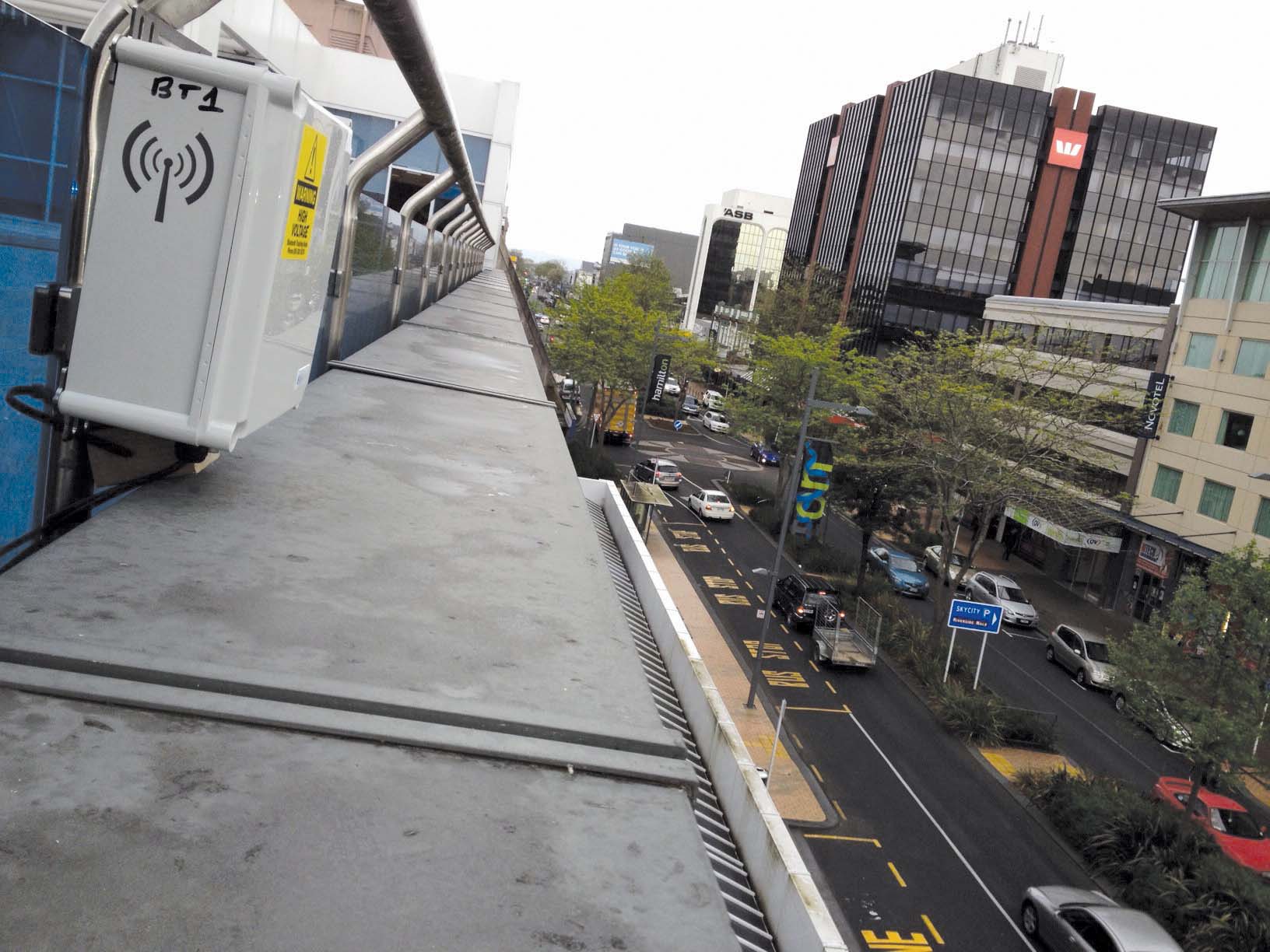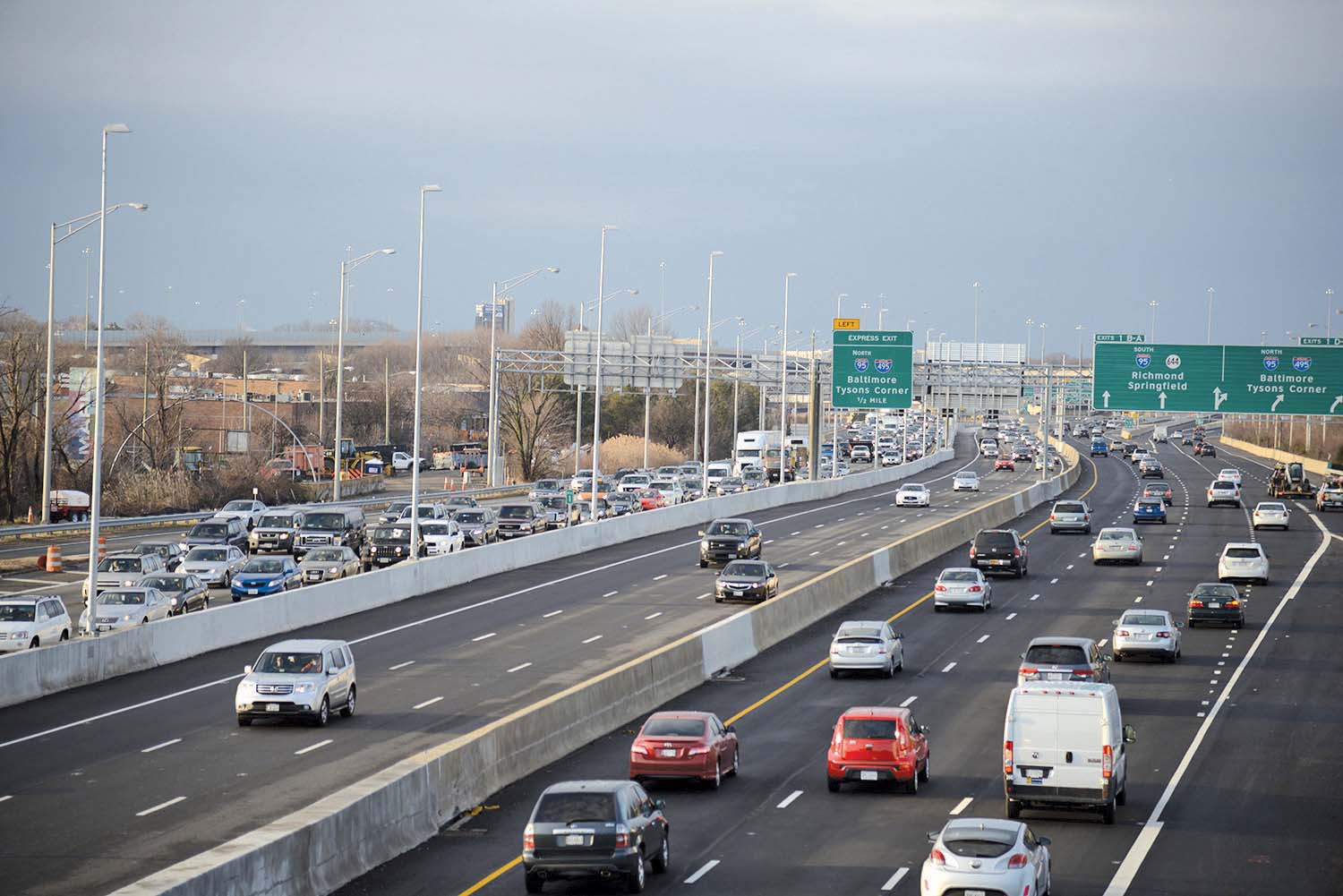David Crawford welcomes progress in cross-boundary coordination Iteris’ US$1.4 million contract for traffic signal synchronisation on Newport Boulevard, California is evidence of an acceleration of activity by the Orange County Transportation Authority (OCTA) in coordinated traffic management. It also continues the US traffic management specialist’s established technical relationship with the area’s prime transportation agency.

Traffic on Newport Boulevard in Costa Mesa
David Crawford welcomes progress in cross-boundary coordination
The Newport Boulevard project forms part of OCTA’s second generation traffic congestion relied initiative (Measure M2) Regional Traffic Signal Synchronisation Program. At 11km (6.8 miles) in length the corridor, which runs within the cities of Costa Mesa and Newport Beach, is a key arterial link to major tourist destinations, such as the Balboa Peninsula and the Orange County Fairgrounds.
The former is a favourite beach, surfing resort and nightlife destination; while the annual OC Fair, locally reputed as ‘the place to be for carnival rides and fattening food’ attracts over a million visitors every July.
Newport Boulevard starts on the Balboa Peninsula and continues as a six-lane highway (three in either direction) until dividing into the below-grade state route (SR)-55 freeway and the parallel North and South Newport Boulevards.
Orange County’s Regional Traffic Signal Synchronisation Program statistics 2008-2013
| Number of completed projects: | 18 |
| Signalised intersections covered | 1074 |
| Number of km covered | 430 |
| Total cost | US$13 million-plus |
| Travel time improvement | 16% |
| Speed improvement | 18% |
| Stops per km improvement: | 36% |
| Greenhouse gas reductions | 172 million kg |
| Fuel reduction: | 68 million litres |
| The whole programme cost | US$13 Million |
| Along its length, 33 intersections need upgrading: 15 in Costa Mesa, 10 in Newport Beach and eight owned and maintained by the California Department of Transportation ( Iteris communications manager Tom Roberts told ITS International: “As part of this project, we are providing full design and integration services for the installation of new controllers, Ethernet communications equipment and emergency pre-emption systems. We will then integrate these into the respective central systems of the participating agencies to deliver better signal management and monitoring in real-time.” The company has already worked with Newport Beach on area-wide ITS deployment and traffic signal synchronisation projects, and is currently engaged with Costa Mesa. It upgrades 750 signalised intersections across the US every year. OCTA lays down performance criteria for the upgrades and monitor them for compliance with its Regional Traffic Signal Synchronisation Master Plan. Speaking to the US Institute of Transportation Engineers in 2013, OCTA project manager Ron Keith listed signal timing as next in importance for good traffic management after infrastructure upgrades. “Drivers”, he said, “have become more aware of these projects and are paying attention to the results. Good or bad, they will call their [political] representatives.” He also warned that traffic signal synchronisation “will benefit the public only if it is well maintained.” OCTA’s regional traffic signal synchronisation projects have two-year operation and maintenance contracts, based on cooperative agreement stating that coordination cannot be turned off without incurring severe financial penalties. Measure M2OCTA’s Measure M2 program is based on a 0.5% sales tax levied for transportation improvements that was initially approved by Orange County voters in 1990 and then renewed in 2006. The authority sees traffic signal synchronisation as a cost-effective way of increasing street and road capacity without the need for new construction, with the synchronised corridors experiencing significant reductions in congestion levels.Demonstration projects that laid the groundwork showed that most traffic signal synchronisation projects typically result in 5% to 15% improvement in travel times and speeds – figures authenticated by the US Institute of Transportation Engineers. Since 1991 when OCTA emerged as the consolidation of seven previously separate traffic management operations, it has been giving a high priority to overcoming the problems resulting from individual signal timing programmes. While these had been developed to reflect prevailing traffic patterns and congestion levels, the scope was restricted to road segments lying within the boundaries of city limits or impacted by physical barriers. With the county’s population expected to increase by 11% by 2030, OCTA is working with Caltrans and 34 individual city administrations to coordinate traffic lights across the region in an effort to ease current and growing traffic demands. Mobility objectives in its 2014-2019 strategic plan include:
The regional traffic signal synchronisation master plan forms an integral part of OCTA’s travel demand strategy, along with green travel and bus rapid transit initiatives. It is corridor-based, with over 90 identified routes involving 34 local jurisdictions, the county and Caltrans. State-wide policyCaltrans has developed its own in-house software for traffic control, and is working on a statewide policy to promote strategies that optimise the performance of existing infrastructure. Agency spokesman Jason Probst told ITS International: “Traffic signal synchronisation is an effective strategy consistent with this policy.”Overall, the master plan aims to synchronise 2,000 traffic signals on 1,200km (750 miles) of road running across most of the county to facilitate traffic flows. There is a US$110 million budget for projects over the period from 2013 to 2020 and local agencies are required to provide a minimum match funding of 20%. To meet this target, OCTA is currently accelerating the pace of its own coordination implementation and is currently funding 51 traffic signal synchronisation projects at a cost of US$38 million. Once completed this programme will deliver the synchronisation of a further 1,360 signals covering 580km (360 miles) of roadway. Nationally, investment in traffic signal synchronisation enjoys strong federal support from both the US Department of Energy and the US Department of Transportation (USDOT). The former sees it as making a worthwhile contribution to reducing the impact of vehicle travel on energy consumption and air quality. USDOT’s Federal Highway Administration calculates that unnecessary waiting at signals accounts for an estimated 5% to 10% of all traffic delays, equating to 295 million vehicle-hours of delay on major roads alone across the US. The Research and Innovative Technology Administration reckons traffic signal synchronisation is a low-cost approach to reducing congestion. Actual figures depend on the nature of infrastructure, congestion levels and whether timing plans apply weekdays only or (as in Orange County) all week. Costs can start at around US$3,100 per signal per update and a single engineer can typically maintain at least 40 signals. The drive for traffic signal synchronisation adoption by traffic departments nationwide reflects a series of poor ratings given to their traffic signal management practices by the US National Transportation Operations Coalition (NTOC), an alliance of associations (including ITS America), practitioners, consultants and industry groups. Its periodic national traffic signal report card assessments evaluate the performance of regional and local agency programmes. Its latest, 2012, survey of 241 local and state agencies in the US (and Canada) registers a ‘slight improvement’ on the 2005 and 2007 results, showing a degree of on-going progress by agencies that operate the majority of traffic signals in the US. But estimates suggest that up to 75% of the 300,000 traffic signal arrays across the US would benefit from timing improvements. Stressing that motorists ‘have no recognition of jurisdictional boundaries as they drive the roadway network’, the NTOC urges traffic management agencies that have not already done so to develop ‘an objectives-driven programme management plan’, that encourages coordination with neighbouring jurisdictions.
|










